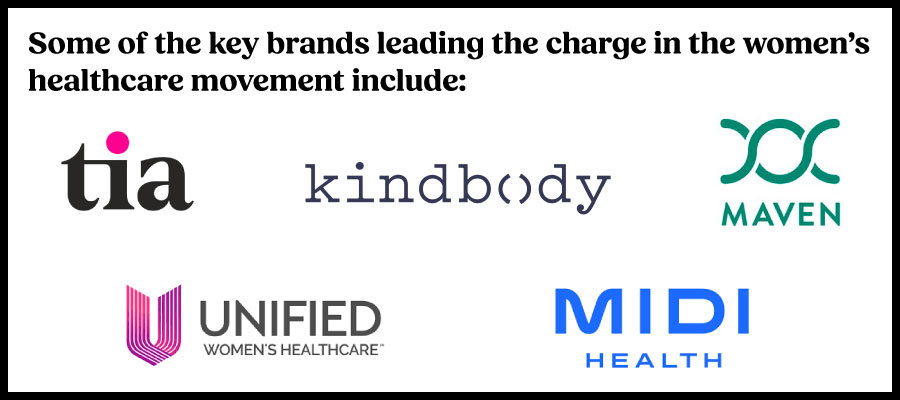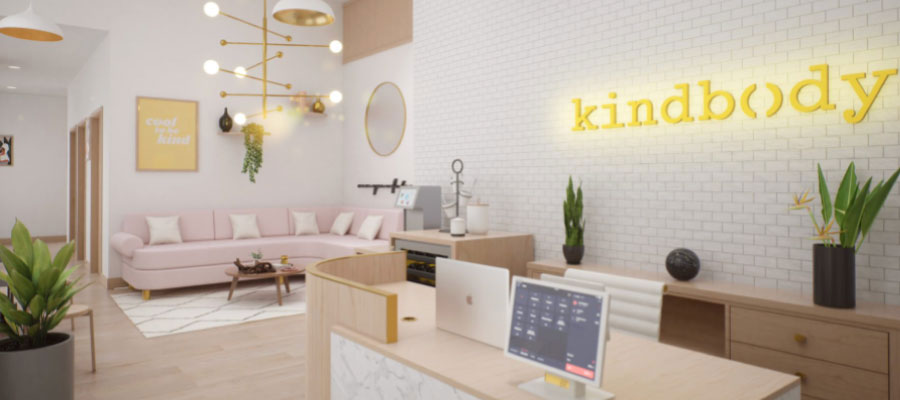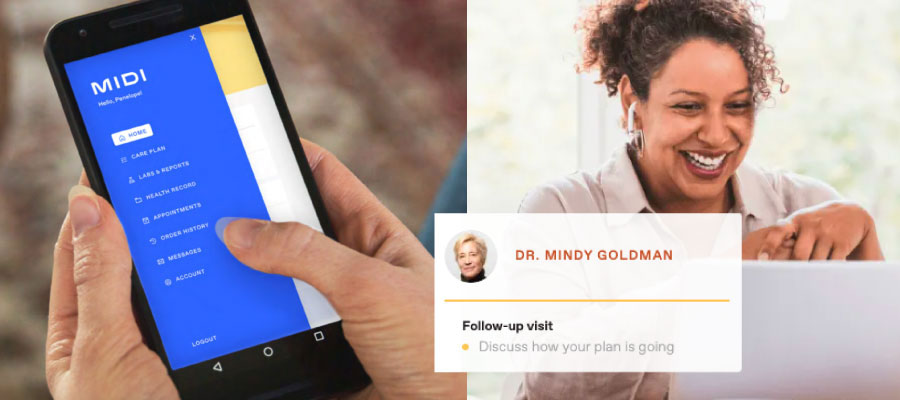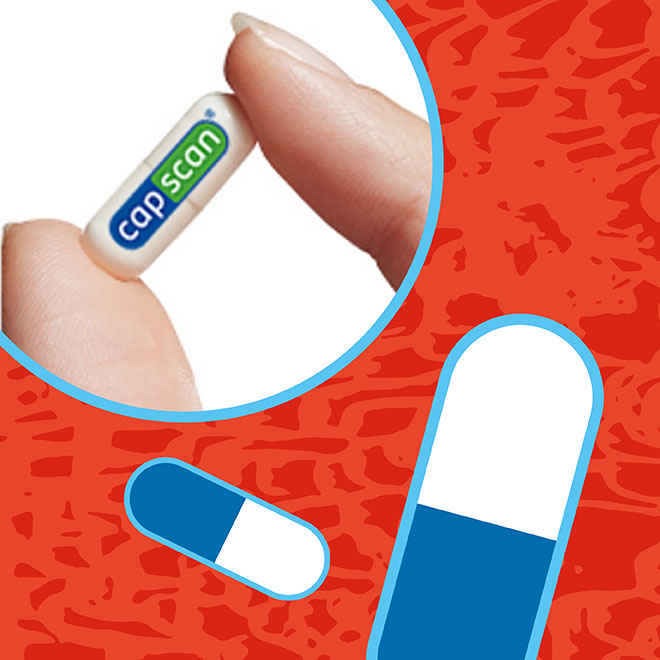
A Revolution in Women’s Health
A Compelling Target Market
There has been a transformative shift in women’s health, with practices offering a more comprehensive and modern approach to holistic healthcare. This change is driven by the unique needs of women and a desire for more cohesive and consumer-centric experiences. With women accounting for over half of the population and responsible for 80% of the healthcare decisions in the home, one would think that women would be a key consumer target for healthcare.1 Women are more likely to be the family caregivers, making appointments and healthcare purchasing decisions for children, partners, and parents, and they even pick up 70% of prescriptions. Furthermore, while women utilize more healthcare services and are 76% more likely than men to have visited a doctor within the past year, research indicates that 60% of reproductive age women do not have a primary care doctor.2 All of this to say, the time is now for women to be a top-of-mind target consumer group for healthcare providers as they are a powerful and underserved consumer group in the healthcare industry.
Disjointed and Disconnected Health Experiences
Despite the buying and utilization power of women, their healthcare experiences often fall short of expectations. While many conditions affect both men and women, the ways in which they do so are different and many women’s health needs are different and unique from their male counterparts, encompassing a wide array of services including:
- Primary care, diet, and fitness
- Contraception
- Fertility
- Maternity
- Menopause
- Gynecology
- Women’s oncology
- Mental Health
Given the fragmented nature of healthcare delivery services, receiving all of these services in today’s healthcare environment requires multiple visits to multiple doctors and locations, resulting in a disjointed and confusing customer experience. On top of that, the lack of coordination among these services often leaves women without a cohesive picture of their health. Clinical environments that feel cold and intimidating fail to cater to the unique needs and preferences of women, further exacerbate the issue. A trend that has continued over time across all specialty health.
The “Pink Tax”
To make matters worse, women with job-based health insurance end up paying about $15.4 billion more in out-of-pocket health care costs annually compared to men with similar coverage, even when adjusting for maternity costs*. This gender disparity, known as the “pink tax,” equates to approximately $266 per woman per year in the country, marking a 20% increase in healthcare costs compared to men.3
Opportunity for Disruption
Given the state of today’s health experiences for women, it is no surprise that there is a growing demand for more inclusive, innovative alternatives. Women are seeking a more holistic, comprehensive, and modern approach to managing their health across various life stages.
Startups, powered by private equity investment, have certainly noticed this demand, and a new crop of women’s focused providers have entered the scene, capturing attention and share. According to Pitchbook,4 investment in women’s health care companies in the US climbed to an all-time high of $3.3 billion in 2022. Some of these are pure-play Femtech offerings, while others are offering a more omnichannel and comprehensive offering.
Scientific advancements in fertility and hormone treatment open opportunities for a new pathway of healthcare. Fertility startups are garnering much of the investment. Recent data from the Centers for Disease Control and Prevention shows that nearly 20% of 15- to 49-year-old women are unable to get pregnant after a year of trying. In 2022, there was $854.5 million invested in fertility tech companies from venture capital investors, according to Pitchbook data, and the number continues to grow.5 Other players are developing suites of services that provide care from puberty to postmenopausal stages, complemented with telehealth and virtual health, behavioral health, sophisticated technology and AI, and newly designed environments that appeal to women’s tastes.
Some of the key brands leading the charge in the women’s healthcare movement include:

Tia
What began as a chat-based app, Ask Tia (Spanish for aunt), that helped users answer questions about birth control, sexual health, insurance coverage, and more, has evolved into the “modern medical home for women,” offering comprehensive in-person and virtual care to support women’s physical, mental, and reproductive health.
Targeting the specialized and fragmented experience of women in health, the brand promotes itself with messages such as, “Finally, healthcare that treats the whole you,” and, “Get Your healthcare needs, all in one place.”
Tia has eight physical clinics in New York, California, and Arizona with more underway. Physical locations are modern, energetic, colorful, and distinctly non-clinical in appearance. Lately, they have expanded their offering to include gynecology, mental health, acupuncture, pelvic floor physical therapy, and massage therapy, and they partner with health systems to refer conditions beyond their scope of practice.
Like many disruptive primary care providers, Tia utilizes an integrated Care Team that works together as opposed to a single doctor approach. Annual or monthly memberships are offered directly to consumers or through employee benefit packages and include unlimited messaging with your Care Team, flexible appointment times, community workshops, and more.

Kindbody
Kindbody provides convenient and affordable access to fertility consultation, egg freezing, in vitro fertilization, embryo banking, embryo storage, and other fertility and wellness solutions through employer health plans. The brand offers over 30 modern, warm, physical locations across the country in addition to virtual tools. The company has received a $100 million investment from Perceptive Advisors and added $25 million from Morgan Health.

Unified Women’s Healthcare
Unified Women’s Healthcare has taken a very different tactic to solve the fragmentation and access issues women face. Unified is a nationwide community of providers, operations specialists, and thought leaders collaboratively serving a variety of women’s health needs at every stage of life. In the process they have become one of the largest women’s health companies in the United States. The practice management and support organization has created a collaborative network that claims over 925 care centers, 36 fertility clinics, nationwide telehealth capabilities, and targeted case management. The network has over 2,700 independent, affiliated providers delivering comprehensive women’s health services including obstetrics and gynecology, fertility, and menopause care and it uses centralized operational and technology development to support its clinical affiliates.
According to Unified Women’s Health, the benefit of this approach is that it “can connect, centralize and optimize care, while re-establishing the importance of the physician-patient relationship and preserving a provider’s clinical autonomy.”

Virtual Women’s Health
Another route to filling the gap in women’s health comes from a host of virtual apps and services, many of which are offered as a benefit through employer health plans. Maven Clinics and Midi Health are two of the more notable names in this space.
Maven
Maven is the largest virtual clinic for women’s and family health, offering continuous, holistic care for fertility and family building through maternity, parenting, pediatrics, and menopause. Maven sells its services through employers and health plans to reduce costs, drive better maternal health outcomes, and enhance DE&I in benefits programs. Maven has raised $300 million in funding from leading private equity investors.

Midi Health
Midi Health, a virtual health/telehealth company, focuses on the other end of the age spectrum, women between the ages of 35 and 65, and offers virtual menopausal and perimenopausal care to women by treating symptoms like anxiety and depression, joint pain, and weight changes. Personalized care plans can include hormonal prescription medications, behavior change coaching, and certain supplements. The company offers its services directly to consumers and through employers. It also works with health systems in partnership by referring more complex patients to an in-person clinician. Midi Health has raised $40 million to date, including a recent investment from Google Ventures.

Just the Beginning
The healthcare industry is at the cusp of significant change, finally recognizing that its traditional approach is not working for women. New models, new concepts, and new technology tools are capturing the attention of consumers and attracting investment resources and it’s certainly exciting to see the development of this sector of healthcare. These new models underscore the need for health executives and administrators to approach consumer populations as market segments, and not as a broad homogenous group. The women’s health market, like other segments, has unique needs and will be drawn to providers who cater to those needs, looking, feeling, and acting in a manner that appeals to them. It is time to take a page from the lessons major retailers learned long ago, and focus products, services, technologies, and physical facilities on targeted segments, creating holistic experiences with the target consumer at the center.
Take Action
WD Partners is fully equipped to guide your teams through the process of developing and executing your women’s health experience. Our expertise extends from insights and strategy development to designing and creating innovative brands, experiences, and environments, and scaling them nationally. We would be delighted to assist in creating a truly differentiated and market-share stealing women’s health program for your organization.
If you’d like to discuss more with our Health + Wellness Practice, please contact Dan Stanek at dan.stanek@wdpartners.com or Kate Fisher at kate.fisher@wdpartners.com
Learn more about how WD can help innovate and scale your practice and then talk with our Health and Wellness practice leader, Dan Stanek, to get started.

 Kate Fisher
Kate Fisher Dan Stanek
Dan Stanek


